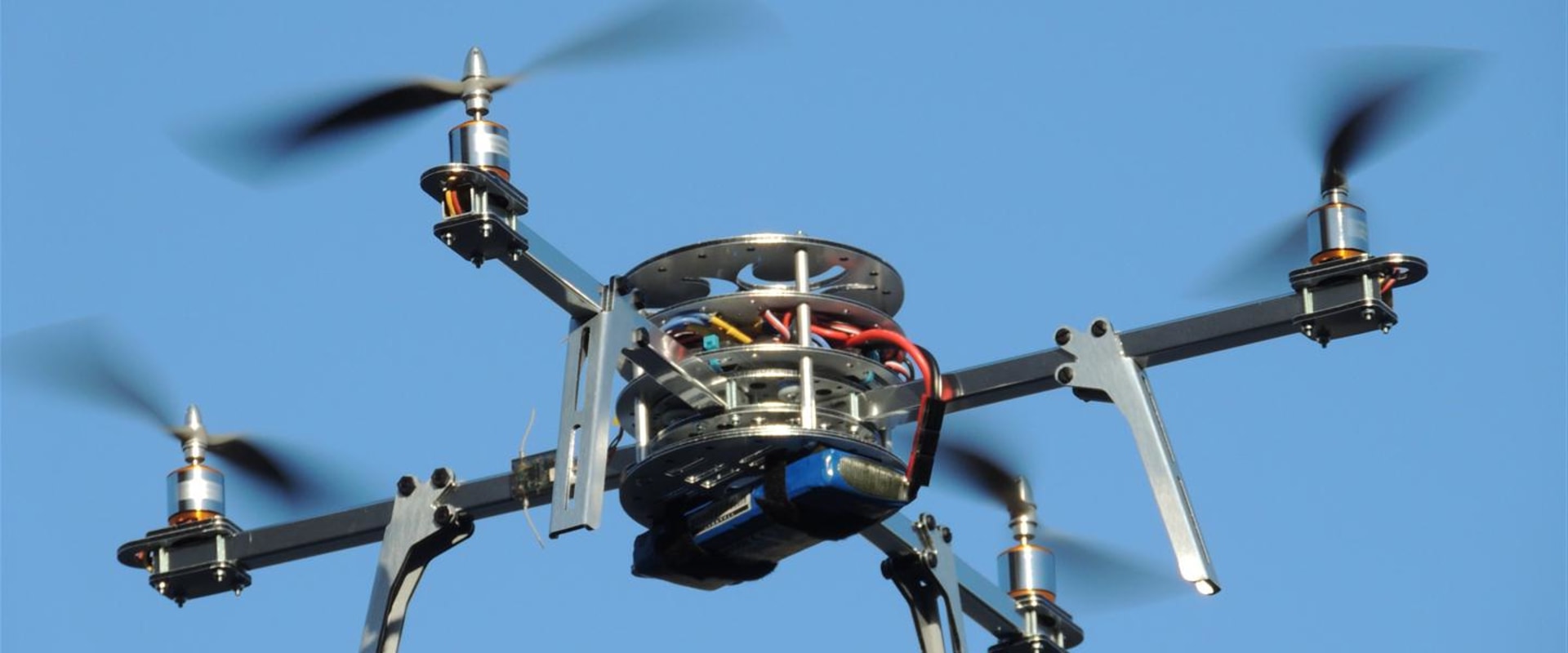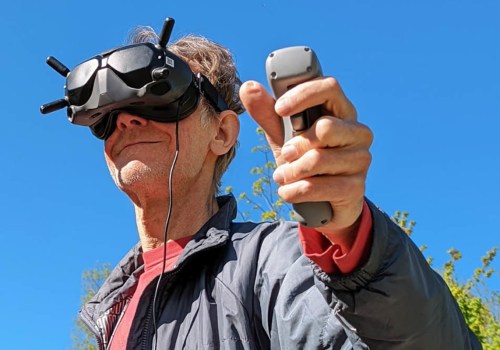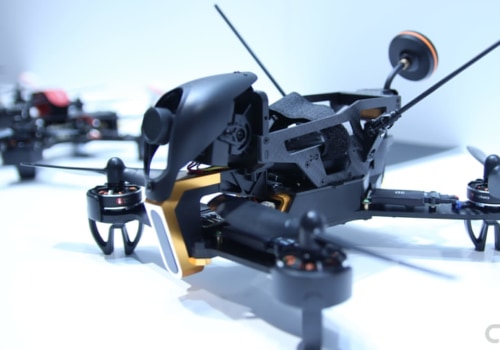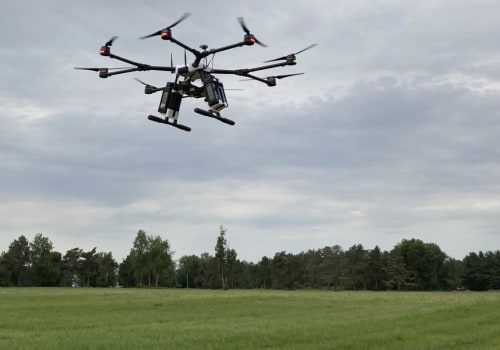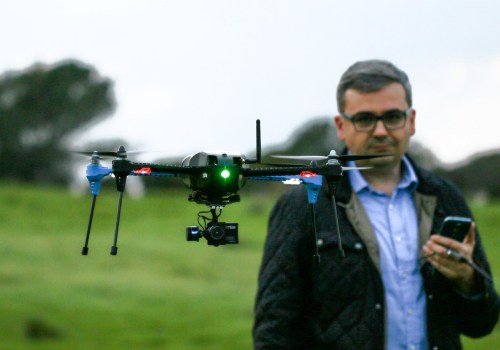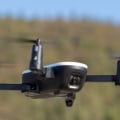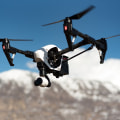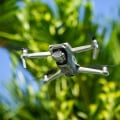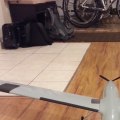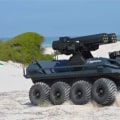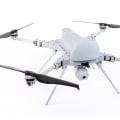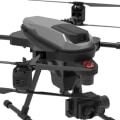From hobbyists to professionals, quadcopters have become increasingly popular in recent years. With the rise of commercial drones, building your own quadcopter is becoming an attractive option for those looking for an affordable and fun way to explore the world from above. In this comprehensive overview, we'll take a look at the different components that go into building a quadcopter, as well as some of the resources available for getting started with your own DIY drone. Whether you're a beginner or a more experienced builder, understanding the basics of how a quadcopter works and the various parts that make up a drone is essential for successful construction.
We'll begin by looking at the types of motors and other components used in quadcopters, as well as the various flight controllers and other electronics used to control them. We'll also explore the different types of frames available, as well as the materials used to construct them. Finally, we'll look at some of the resources available to help you get started on your own DIY project. The first step in building a quadcopter is selecting the right parts and components. You'll need a frame, motors, propellers, an ESC (electronic speed controller), a flight controller, a battery, a radio transmitter/receiver, and other miscellaneous items such as wires and connectors.
The frame is the main structure of the quadcopter and can be made out of wood, plastic, metal, or carbon fiber. Motors are used to power the propellers and can range in size from small to large. Propellers come in various shapes and sizes and can be made out of plastic or carbon fiber. An ESC controls the motor speed and is usually connected to the flight controller.
The flight controller is responsible for controlling the quadcopter's movements and can be programmed with various parameters to achieve different flight characteristics. The battery provides power to the quadcopter and can range in size from small to large depending on the type of flying you plan on doing. Finally, a radio transmitter/receiver allows you to control the quadcopter from a distance. Once you have all of the necessary parts, it's time to assemble them into a working quadcopter. This involves connecting the frame, motors, ESCs, flight controller, battery, and radio transmitter/receiver together in the correct order.
It's important to make sure that all of the connections are secure and that none of them are loose or exposed. Once everything is connected together correctly, you can then test the quadcopter to make sure it works properly. Finally, there are several safety measures that should be taken when flying a quadcopter. Before taking off, make sure that you have read all of the documentation that came with your parts and understand how they work together. Additionally, always fly in an open area away from people or animals, as quadcopters can cause serious injury if not handled properly.
Make sure to adhere to any local laws or regulations regarding flying drones in your area as well. The first step in building a quadcopter is selecting the right parts and components. You'll need a frame, motors, propellers, an ESC (electronic speed controller), a flight controller, a battery, a radio transmitter/receiver, and other miscellaneous items such as wires and connectors. Make sure to adhere to any local laws or regulations regarding flying drones in your area as well.
Safety Measures
Safety is of paramount importance when flying a quadcopter, and it's essential to take the necessary precautions before taking off. Before flying, it's important to read all of the documentation that comes with the quadcopter, and to familiarize yourself with the controls and settings.It's also important to fly in an open area away from people or animals, to be aware of local laws or regulations regarding drones, and to keep the quadcopter within your line of sight at all times. When it comes to safety, it's also important to inspect the quadcopter before each flight. Make sure that all of the parts are secure and in working order, and that the propellers are spinning correctly. Additionally, make sure that you have the proper protective gear for flying the drone, such as goggles or a headset to protect your eyes and ears from debris. Finally, it's always best practice to fly a quadcopter in good weather conditions. Pay attention to wind speed and rain, and always fly responsibly.
By following these safety measures, you can ensure that your quadcopter flights are both enjoyable and safe.
Parts & Components
When it comes to building your own quadcopter, the parts and components needed are essential to the success of the project. The most common parts and components for a quadcopter include a frame, four motors, four propellers, an electronic speed controller (ESC), a flight controller, a battery, a radio transmitter/receiver, and other miscellaneous items such as wires and connectors. The frame is the foundation of the quadcopter and provides support for the other components. It is made of either plastic or carbon fiber and should be light yet strong enough to handle the weight of the other components.The four motors provide the thrust necessary to make the quadcopter fly. They are typically brushless DC motors that are powered by the ESC. The propellers are what generate lift and thrust for the quadcopter. They come in different sizes and materials depending on the type of quadcopter being built.
The ESC is responsible for controlling the speed of the motors. It receives commands from the flight controller and adjusts the speed accordingly. The flight controller is responsible for controlling all the aspects of flight such as altitude, yaw, pitch, and roll. It receives commands from a radio transmitter/receiver and sends signals to the ESC for motor control.
The battery provides power to all of the components and needs to be chosen with care as it can affect performance and safety. LiPo batteries are most commonly used in quadcopters as they are lightweight and provide long-lasting power. The radio transmitter/receiver is used to send commands to the flight controller and is typically connected to a joystick or smartphone app. Finally, miscellaneous items such as wires and connectors are needed to connect all of the components together.
Assembly & Testing
Assembling your quadcopter is an important step in the process of building it.You need to make sure all the parts and components are connected in the right order and securely fastened. Begin by connecting the main body of the quadcopter, usually consisting of four arms and a center frame. Once the main body is in place, add the motors, propellers, and other components. Make sure to follow the instructions provided with your quadcopter kit or online tutorial to ensure everything is connected correctly.
Next, you'll need to install the flight controller board, which is responsible for controlling the motors, GPS navigation, and other key functions of the quadcopter. Most flight controllers come with a variety of ports for connecting to other components, such as a GPS receiver, camera, or remote control receiver. Connect all these components as per the instructions of your flight controller board. The final step in assembling your quadcopter is to attach the battery.
Make sure the battery is securely mounted and correctly connected to the flight controller board. Once all these steps are completed, your quadcopter should be ready for testing.
Testing
Before taking your quadcopter for a test flight, you'll need to perform some basic tests to make sure it's functioning properly. Start by connecting your quadcopter to a PC or laptop via USB port and running a diagnostic test using a compatible software program. This will help you check if all the components are working correctly and if there are any errors or issues that need to be addressed. Once you're satisfied with the results of the diagnostic test, you can move on to testing the flight performance.Take your quadcopter outdoors and put it into hover mode. If it stays stable in one position without drifting, then you can be sure that it is functioning properly. You can also do some basic maneuvers such as forward, backward, left and right movement to test its maneuverability. Finally, take your quadcopter for a test flight and make sure that it is behaving as expected in terms of flight duration and speed. Be sure to follow all safety guidelines when flying your quadcopter and never fly it in restricted airspace.
Parts & Components
Building a quadcopter requires a variety of components and parts.The most important of these include a frame, motors, propellers, an ESC (electronic speed controller), a flight controller, a battery, a radio transmitter/receiver, and other miscellaneous items such as wires and connectors. The frame forms the foundation of your quadcopter, providing structural support and rigidity. It’s important to choose a frame that is lightweight but also strong and durable. Motors are the power source that propels your quadcopter forward.
The number of motors you need will depend on the type and size of your quadcopter. Generally, four motors are used for multirotor aircraft. Propellers are what help generate lift and thrust for your quadcopter. They come in a variety of sizes and shapes, so it’s important to select the right type for your quadcopter.
The ESC is an electronic speed controller that controls the speed of the motors on your quadcopter. The flight controller is the main “brain” of the quadcopter, providing all the necessary functions for operating the aircraft. A battery is needed to power your quadcopter. The size and type of battery you need will depend on the size and type of your quadcopter.
A radio transmitter/receiver is used to control the quadcopter remotely. Miscellaneous items such as wires and connectors are needed to connect all the components together.
Assembly & Testing
Assembly: Assembling a quadcopter from its individual parts is a relatively simple process, but it can be time-consuming. The most important part of the assembly process is to make sure the parts are connected together in the correct order and orientation.This includes connecting the motors to the frame, attaching the propellers to the motors, connecting the battery and other electronics, and connecting the flight controller. Once all the components are connected, you will need to configure your flight controller and calibrate the sensors. This involves downloading and installing the necessary software onto your computer, setting up the flight controller through the software, and ensuring that all of the sensors are properly calibrated.
Testing:
Testing your quadcopter is an essential step to make sure it's ready for flight. This involves checking the performance of each motor by spinning them up individually, checking that all of the sensors are working properly, and setting up the radio transmitter and receiver.In addition, you should also make sure that the quadcopter is balanced correctly by performing a spin test. This involves spinning up all of the motors at once and checking that it remains level in all directions. If it’s not balanced, you will need to adjust the propellers or motors until it is. Finally, you should perform a hover test to make sure that your quadcopter is capable of stable flight. This involves taking off from a flat surface and hovering in place for a few seconds.
If it’s not stable, then you may need to make further adjustments or check that all of your components are functioning correctly. Building your own quadcopter can be an exciting and rewarding experience. With the right parts and components, and a bit of patience and dedication, you can create a functional drone that you can use for recreational or professional purposes. Before you fly, make sure to familiarize yourself with the safety measures that must be taken when operating a quadcopter to ensure that you stay safe and follow all regulations.
